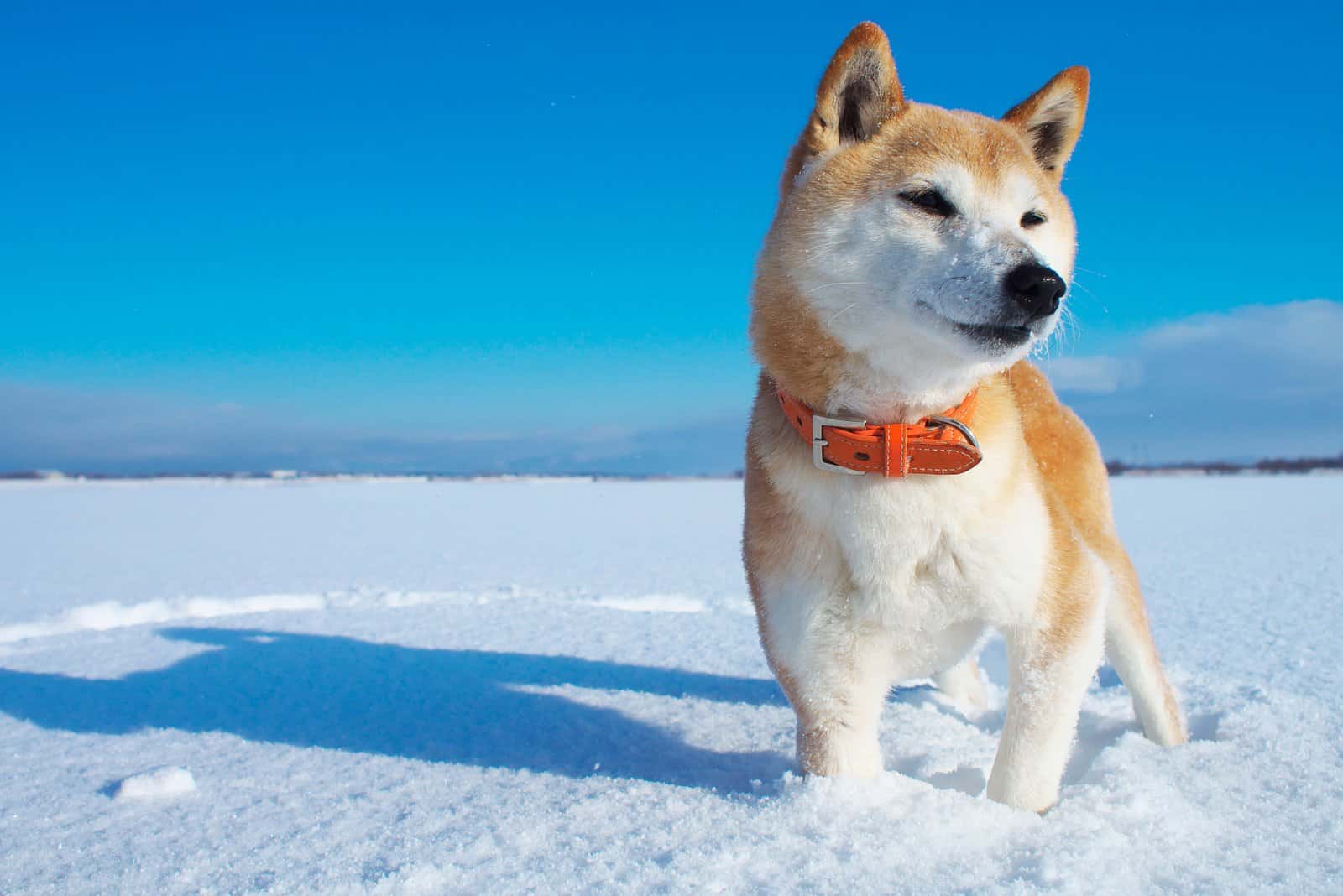Are you looking for a new puppy to be your pawfully wedded companion? Then, you’ve probably been looking at all the different kinds of breeds out there to find the one that suits you best, but you still haven’t decided.
If you have your heart set on getting an energetic four-legged friend to be your companion, how about setting your sights on the sweet and loyal Shiba Inu.
The Shiba Inu’s History
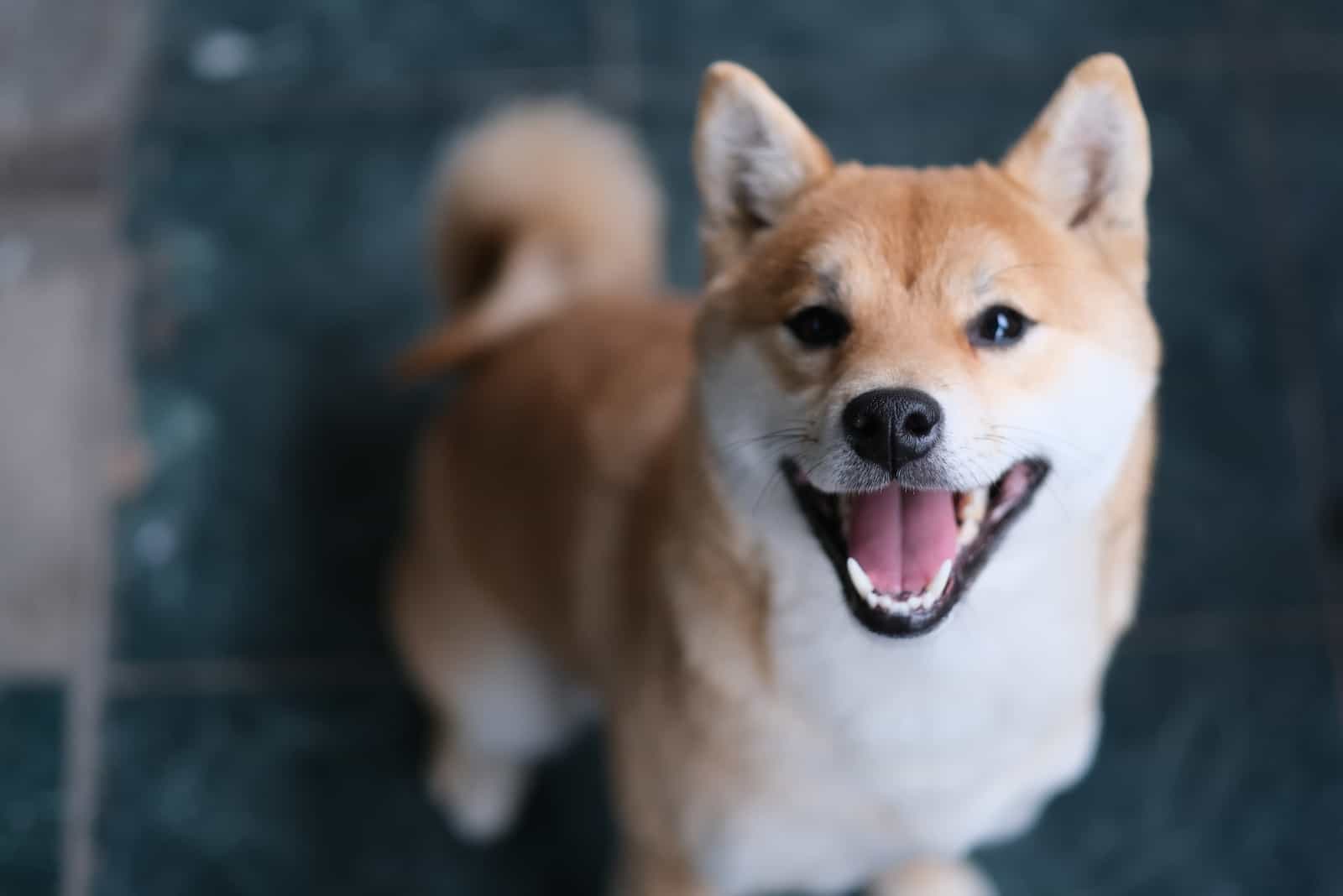
The Shiba Inu (also called the Japanese Brushwood Dog) is nowadays one of the most sought-after companion dogs in the world. Its origins can be traced back to around 3000 years ago in ancient Japan. In addition to the Shiba Inu’s always smiling face being a well-known meme on the internet (the hilarious ‘doge’ meme), a new cryptocurrency coin has been made with its likeness in 2020 (the SHIB coin).
The Shiba Inu breed was primarily bred as a hunting dog for the purpose of hunting small game.
It is a medium-sized breed; one of the six original and Japanese spitz breeds defined by their dense double coat, pointy ears, and curly tail that curves up and over their back.
The Shiba Inu looks very similar to and is commonly mistaken for other Japanese breeds such as the Hokkaido, the Shikoku, and the Akita Inu; however, the Shiba Inu is a different dog breed with a distinguishable bloodline, temperament, and smaller stature compared to other native Japanese dog breeds.
During World War II in Japan, their numbers were endangered due to an outbreak of canine distemper disease combined with food shortage.
In the aftermath of World War II, the purebred Shiba Inu that remained were then meticulously bred from only three surviving pools to ensure their survival.
Nowadays, their numbers no longer wane, but thrive due to dog lovers and breeders who began showing interest in the preservation of the remaining purebred Shiba Inus.
The first Shiba Inu dogs were brought overseas from Japan into the United States in the ’90s, then later, in 2004, they were officially acknowledged by the American Kennel Club.
Devoted, intelligent, energetic, and agile, these beautiful dogs inherited some of the best characteristics from their ancient parent breeds.
The Shiba Inu is the perfect fit for both experienced canine families and novice dog owners alike.
If you are aiming to get a Shiba Inu puppy for yourself, you certainly want to know all there is about these wonderful four-legged creatures.
Luckily, we are here to guide you in your effort to find the perfect Shiba Inu puppy to be your new best friend.
In this article, we will go over all the different Shiba Inu coat colors, color patterns, and coat types.
Shiba Inu Coat Type
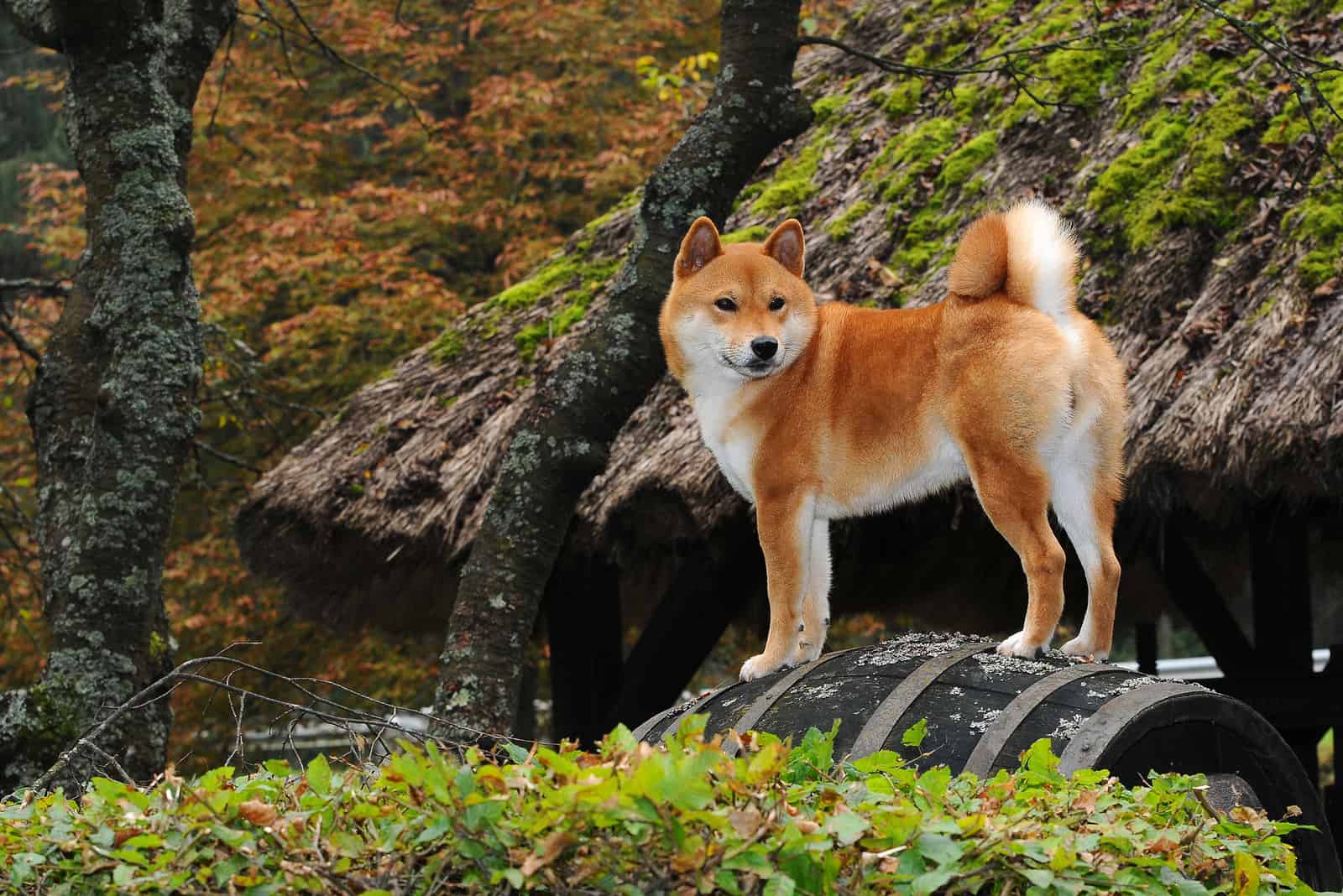
The Shiba Inu is a breed that has a double coat. This means it has a soft and furry undercoat that keeps it comfortable in cold environments, and a longer, coarser, outer coat on top, which serves to protect the undercoat.
The best aspect about their double coat is that they don’t intertwine or knot, so it’s quite simple to brush and maintain them. A Shiba Inu’s coat is silky, not unlike those of Siberian Huskies.
However, they do shed to some degree during the entire year, and they shed a lot twice a year (in the spring and fall) which can result in them leaving copious amounts of hair everywhere if not maintained properly. You can easily avoid this by bathing and brushing your pup frequently.
Although rare, it’s not impossible to find a Shiba with a long-haired coat… these are referred to as wooly Shiba Inus.
Sadly, as gorgeous as they are, these woolies are considered to have a major defect and are not acknowledged in competitive circuits and the show ring.
Needless to say, this shouldn’t concern you if you don’t plan on signing your puppy up for dog shows.
So, let’s take a look at what types of colors these Shiba Inu dogs come in!
Shiba Inu Coat Colors – What Does Urajiro Mean?
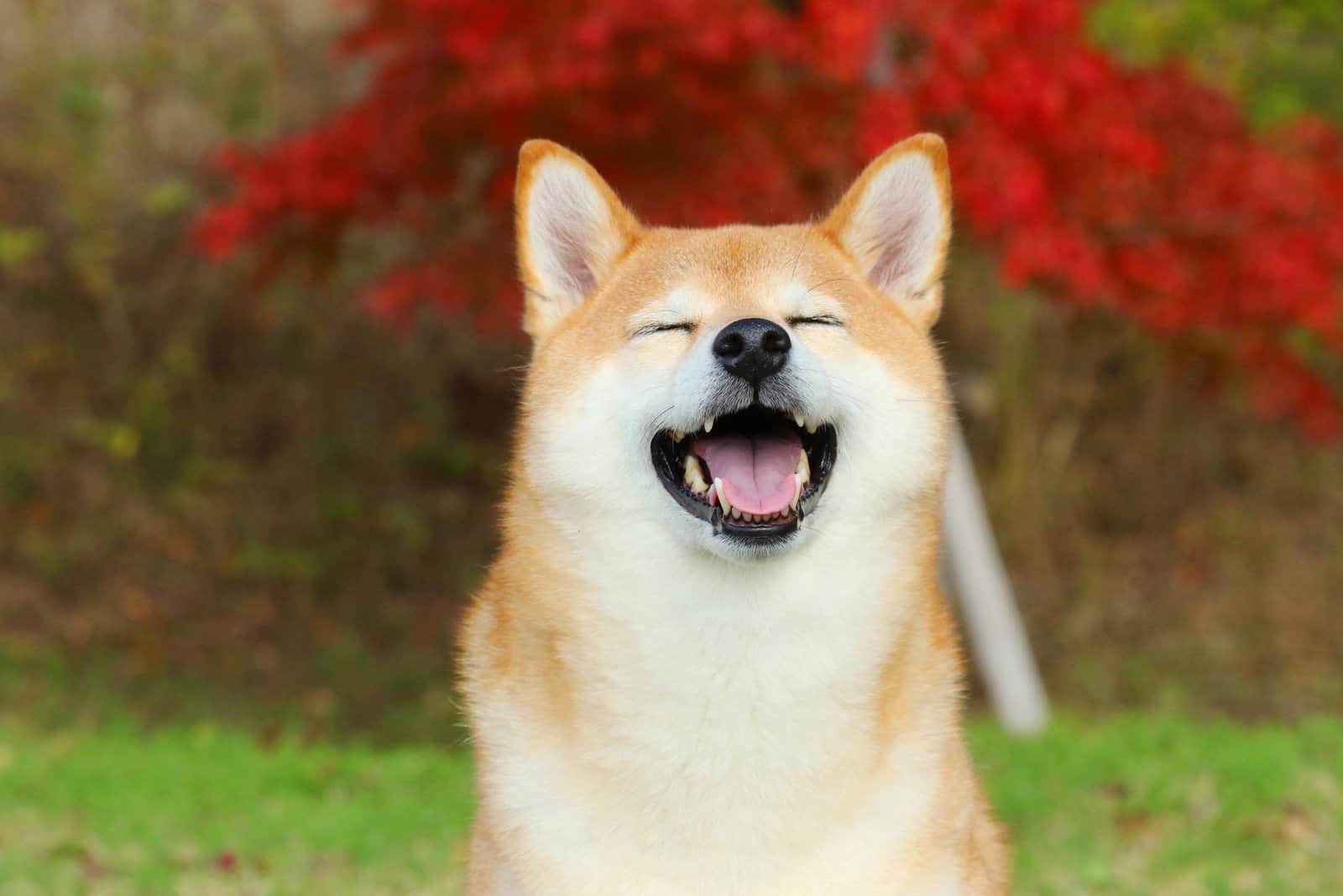
Urajiro is a Japanese word that means ‘white undersurface’. It’s used to represent the special white markings on a purebred Shiba Inu.
Urajiro is acknowledged as the breed standard for the Shiba Inu dog breed by the Japanese Nippo standard; the primary authority in Japan for all native dog breed standards.
Urajiro is discernible on the edges of the muzzle and cheeks, the lower side of the jaw, the inside of the ears, the front part of the neck, as well as the largest part being on the front side of the chest and belly.
There can be other white spots on the Shiba Inu breed that don’t typically fall into the category of Urajiro. These are spots like white socks on their paws and white tips on their tail. These secondary white spots are non-mandatory, and are not considered Urajiro.
Shiba Colors
There are four main types of colors that Shiba Inu breeds usually come in:
1. The Sesame Shiba Inu.
The sesame coat color type is the rarest out of the four major Shiba Inu coat color patterns.
It’s additionally one of the most misinterpretable because there are quite a few conditions that your dog must meet in order to be deemed a true sesame Shiba Inu.
The conditions that must be met for a true sesame Shiba Inu are the following:
• The Shiba Inu must have a coat with a red-colored base.
• It must have a smooth blending of black-tip color over the red base.
• The amount of black pigmentation of the coat must be less than fifty percent.
• There must not be any spot that contains a heavy concentration of black pigmentation, such as a black mask or a black spot anywhere.
• The sesame pattern must be similar to the black and tan coat pattern, with the black spots replaced by a black overlay.
2. The Red Shiba Inu.
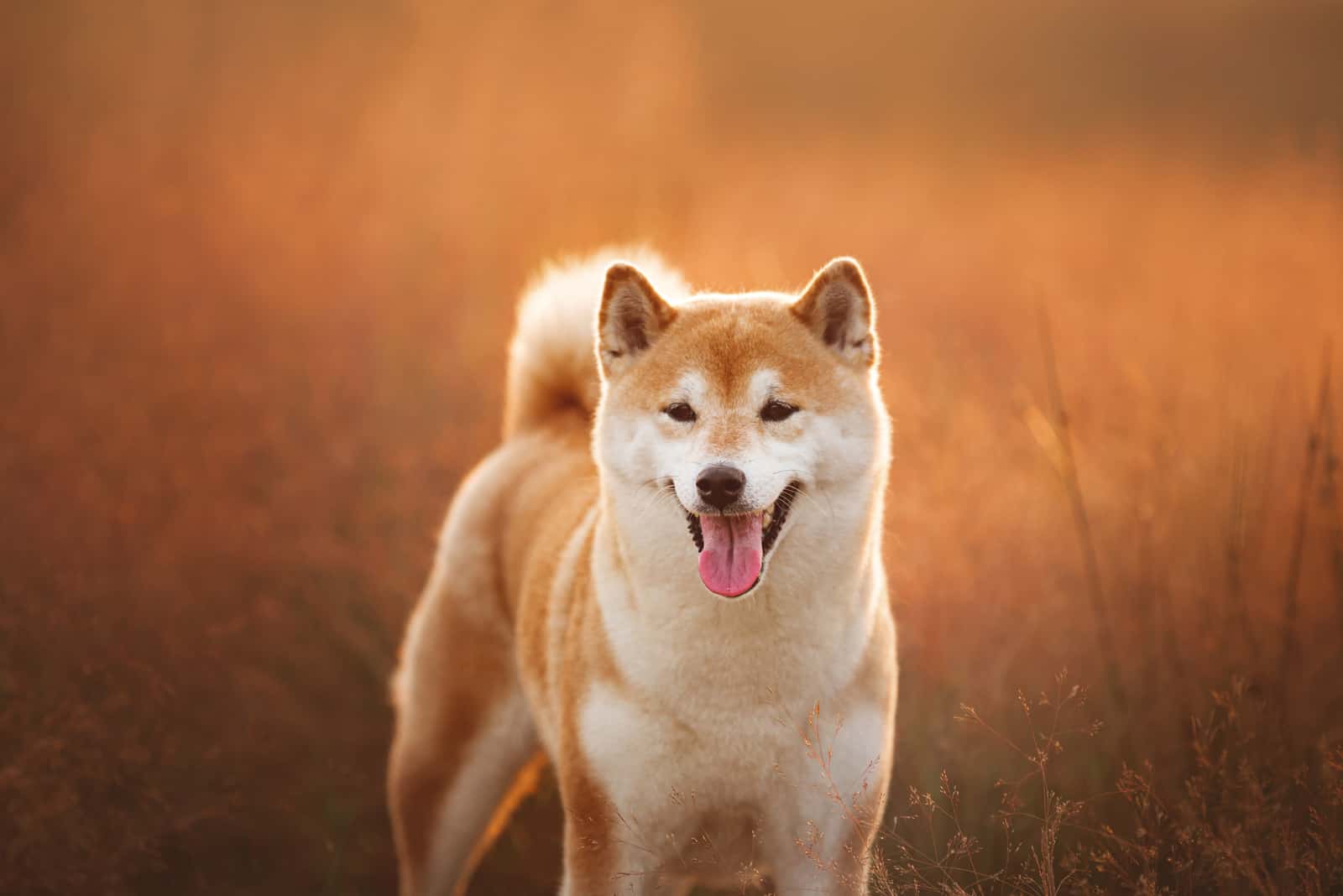
The red Shiba Inu is considered the most common out of all four types of color. It stands out as the ambassador of the Shiba Inu; the image that pops into everyone’s mind when they think of this breed.
On top of that, they are also the most yearned for, especially in dog shows. The Urajiro pattern on the red Shiba Inu is somewhat blurred instead of having clearly defined edges. The blurring on the edges of its Urajiro is due to the gene that is in charge of the red color of the Shiba Inu, always lightening in the direction of the belly.
The classic red Shiba Inu variant allows one to easily spot the dog’s fine symmetrical body shape, and it doesn’t distract from its overall beauty.
3. The Black And Tan Shiba Inu.
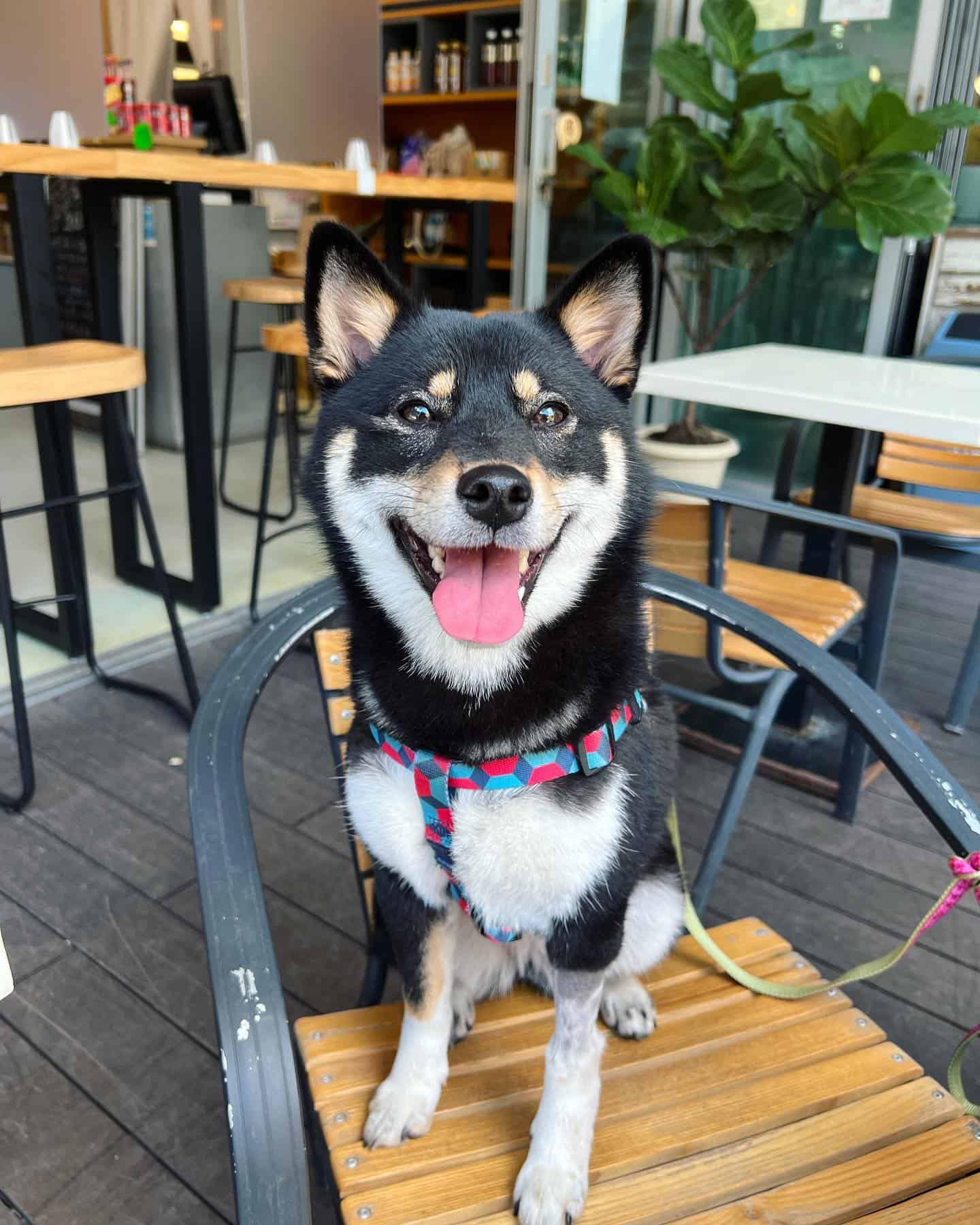
Photo from: @noodlebb_shiba
The black and tan Shiba Inu has a very distinct and vibrant color pattern. The black and tan coat is a triple-colored coat with a black foundation, brownish points, and the mandatory white Urajiro pattern.
A single strand of hair from the black and tan Shiba Inu must contain all three colors. It has a white foundation or base, then a brownish-colored center, and a black tip.
Some dog owners choose this particular color over the standard foxy-red because these dogs exhibit a striking white spot on the chest similar to a bow tie, along with the Urajiro.
Black and tan is one of the common coat colors when it comes to purebred Shiba Inu dogs.
4. The Cream Shiba Inu.
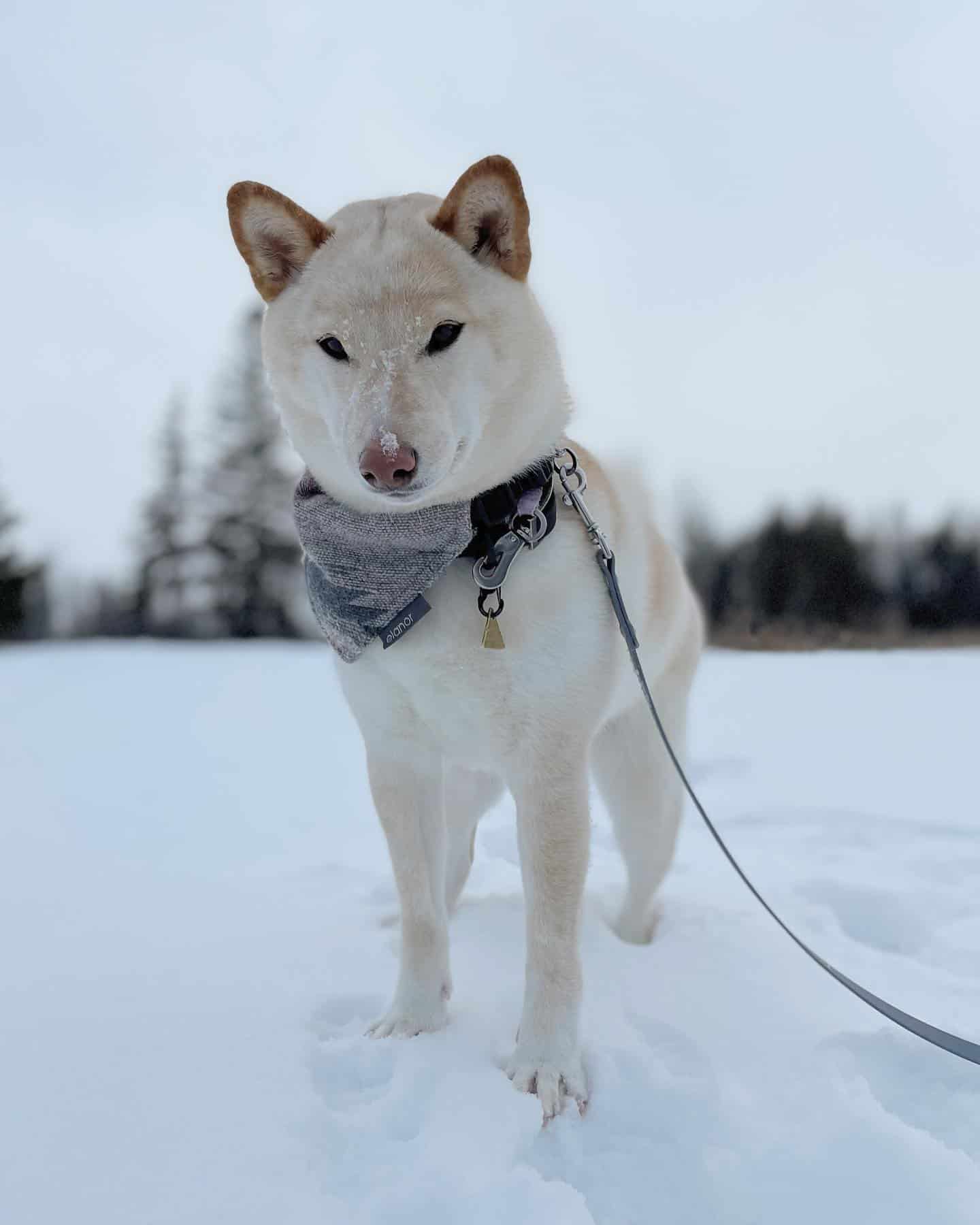
Photo from: @luna.shibz
The cream-colored Shiba Inu is the most unusual and scarce of the four general Shiba Inu coat color types.
Although these dogs are gorgeous, when it comes to the AKC (The American Kennel Club) judging standards, their cream coat is considered a significant fault. This is because a Shiba Inu’s trademark Urajiro pattern is not clearly distinguishable on a cream-colored coat.
The Urajiro should be able to be easily seen even from a distance on the dog’s muzzle, cheeks, neck, chest, and belly.
This is a genetic peculiarity of the cream-colored Shiba Inu caused by two recessive EE genes responsible for the dog’s original red coat color.
These EE genes ensure that the coat gradually shades to a lighter color on the belly of a Shiba Inu.
In the past, there was some dispute over whether cream-colored and white Shiba Inus are more prone to health problems than other types of Shiba Inu dogs, but it has been proven that there is no correlation between the two.
Other Shiba Inu Colors
As you can see, the Shiba Inu dog breed comes in various coat colors.
The coat color types we’ve listed in this article are the shades that are officially recognized by the National Shiba Club Of America and by the American Kennel Club.
However, you may come across Shibas with colors not listed here.
You should be wary of unofficial colors deemed as unique.
The most common cause for atypical colors in Shiba Inus is cross-breeding purebred puppies with different breeds somewhere in a dog’s lineage.
This can be due to unreliable puppy mills and backyard breeders looking to make a quick buck and not caring about the breed standard.
This, of course, does not mean that these dogs can’t be amazing pets, but a responsible breeder will never use it as a reason to charge you more for a dog with non-standard coat colors.
When it comes to color variants, there are lots of other types of coat colors of the Shiba Inu. Let’s take a look at some of them:
The Red Sesame Shiba Inu.
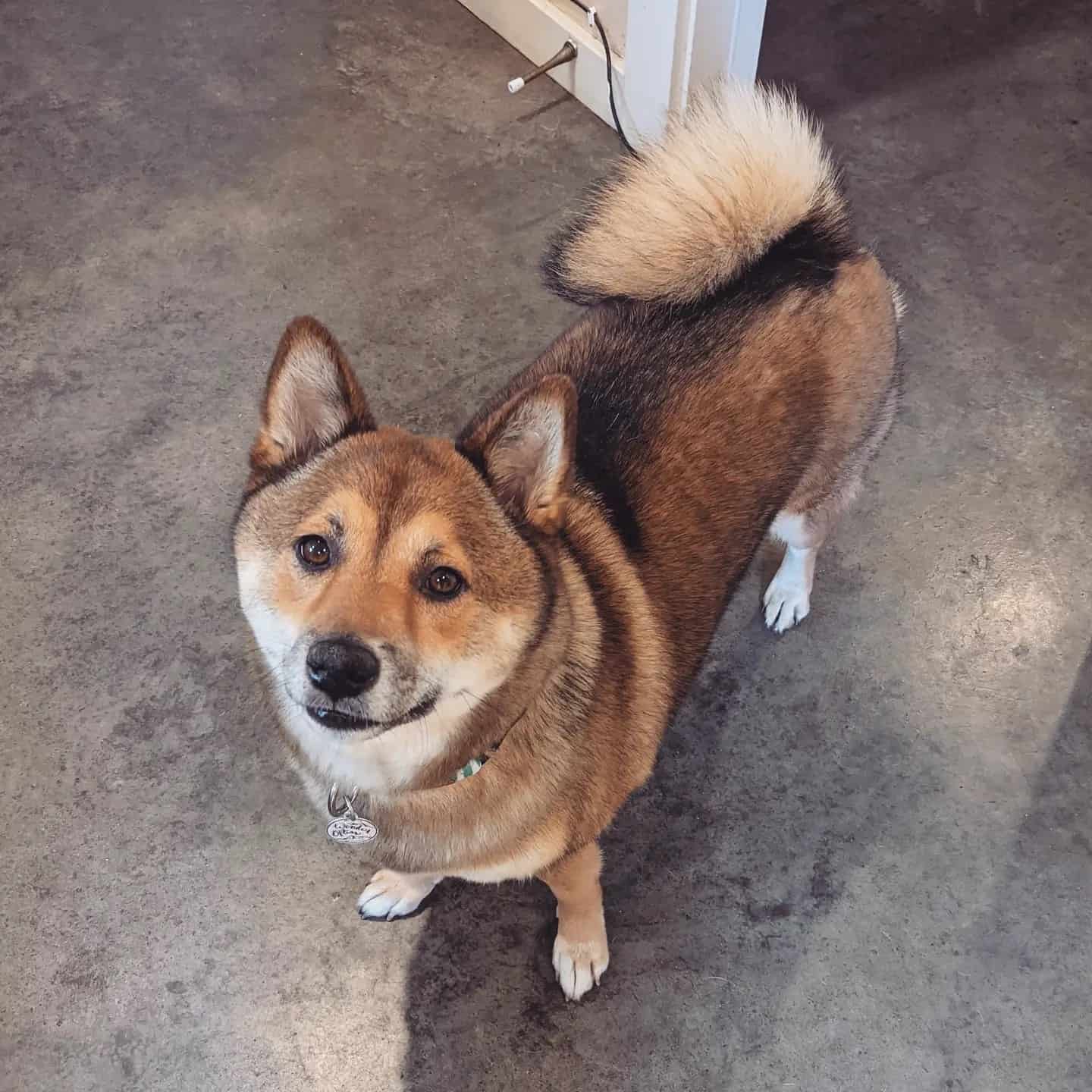
Photo from: @clicker.cafe
If the Shiba Inu has a color pattern similar to sesame, but its coat is lighter and more reddish than required for it to be officially recognized as true sesame, it’s unofficially called Red Sesame.
Similar to standard red-colored Shiba Inus, all Red Sesame Shiba Inus carry a gene that can result in a sesame coloration pattern when they reach adulthood. This happens if one of the puppy’s parents carries a recessive gene for white or pale fur.
Red Sesame should not be confused with the Sable pattern.
Sable Shiba Inus have a recessive gene carried by their parents, with white markings on their foreheads, and this can be seen in lots of other breeds like the Siberian Husky, the Schnauzer, and the Great Dane.
Red Shiba Inus without any tan points or sesame patterns aren’t likely to carry the Sable gene, but if they carry the piebaldism trait, it may result in their nose and paws turning whitish.
The Sable Shiba Inu.
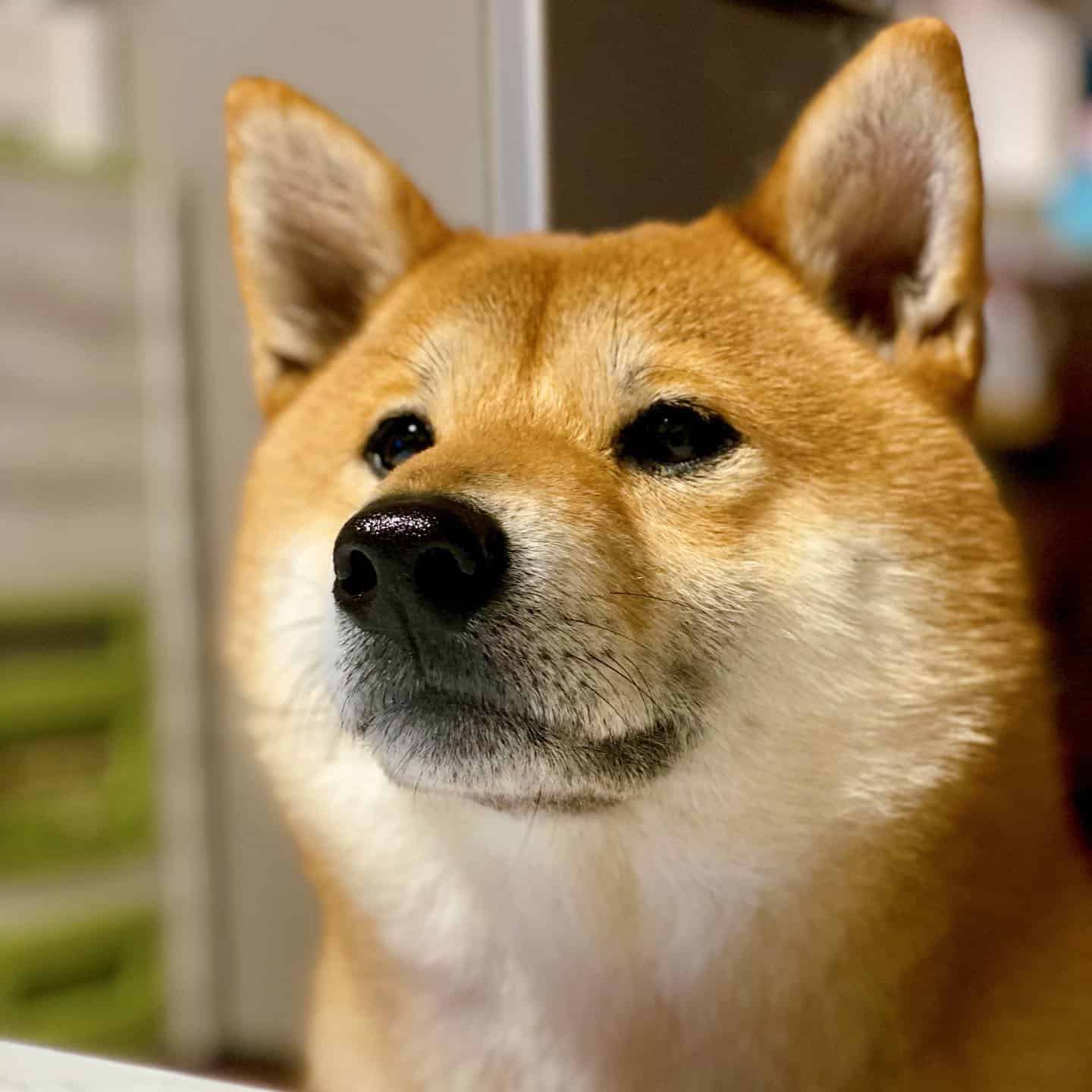
Photo from: @haru_k0405
Sable is not an officially recognized Shiba Inu color, and lots of people mistakenly call this color Sesame.
However, as we mentioned before, the color and patterns need to follow a strict set of rules to be recognized as Sesame.
Any Sesame coat that doesn’t adhere to all the specified guidelines is referred to as Sable.
The Silver Shiba Inu.
The silver-colored Shiba Inu is a minimal variation of the standard Red Shiba Inu.
It has a grayish coat with a black face and black legs.
The Black Sesame.
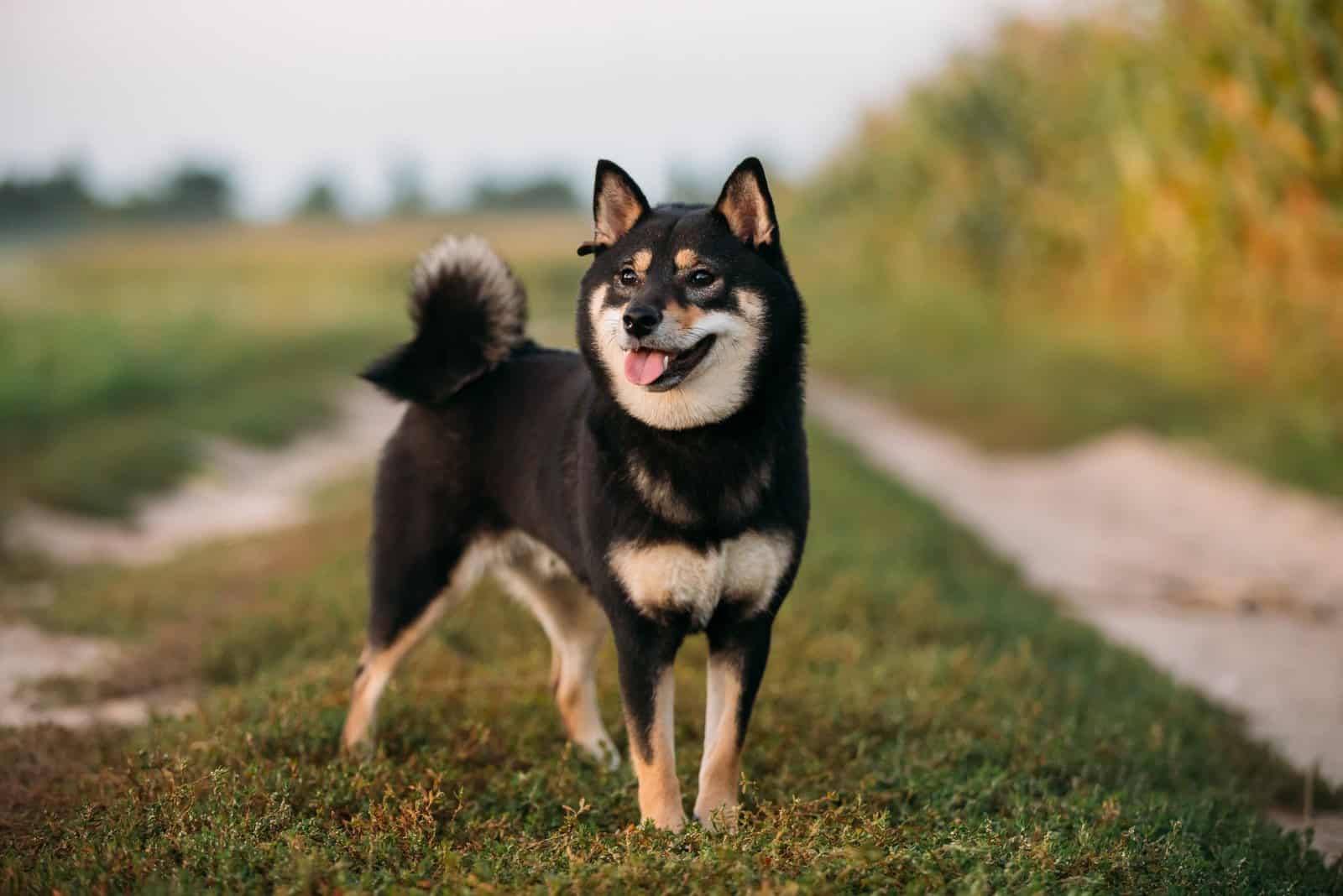
The Black Sesame Shiba may be the rarest of all the Shiba Inu coat colors.
It’s a variation of the Sesame color pattern, with a black foundation.
Even though it’s pretty rare to find them, Black Sesame Shiba Inus are still acknowledged if their coat is less than 50% black.
Black Sesame Shibas are colloquially called ‘Goma’ in Japan, which means Sesame.
The Brindle Shiba Inu.
The Brindle Shiba is also a slight variation of the original red Shiba Inu.
This type has a black and tan coat with lighter stripes running through it.
Shiba Inu Color Changing
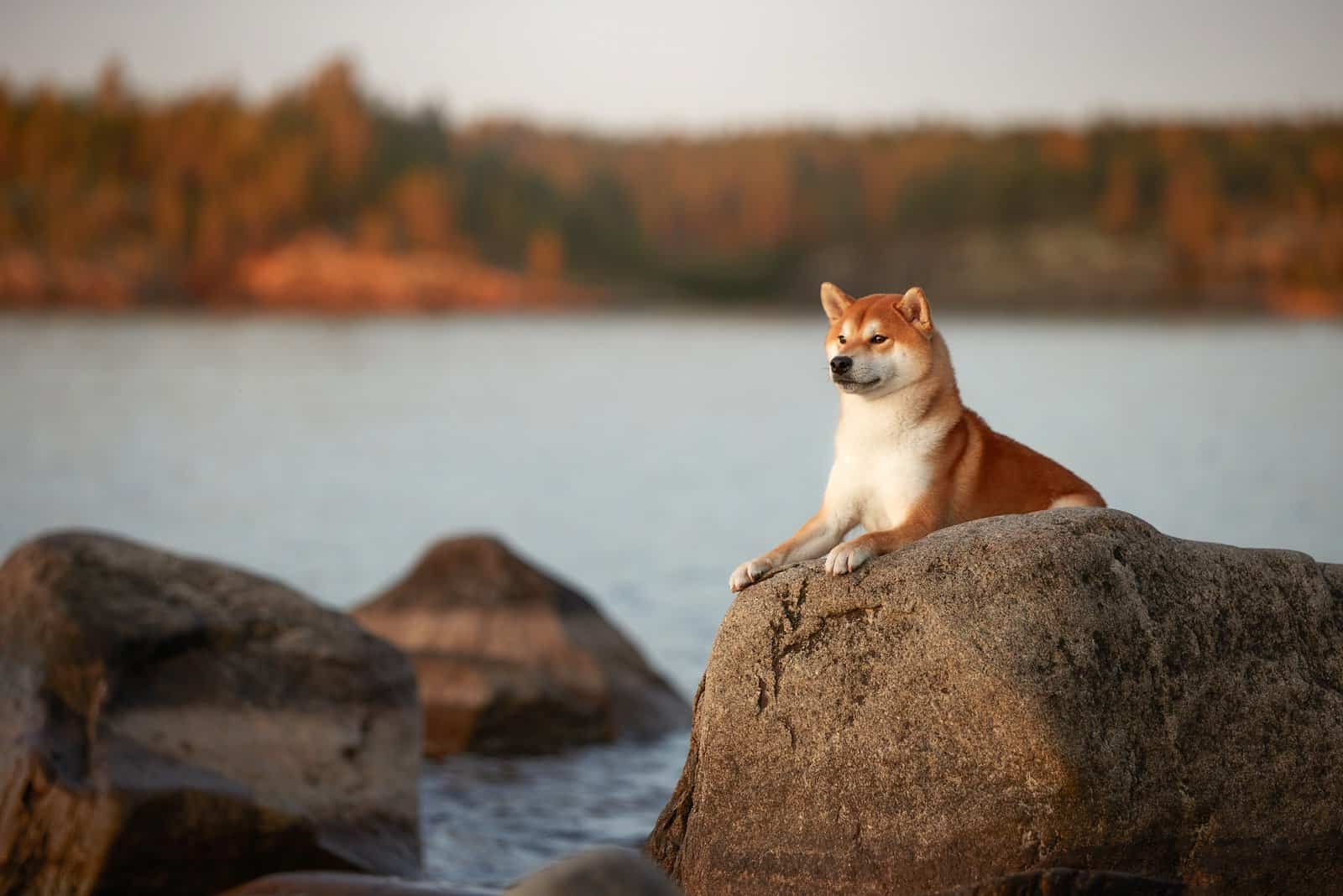
Similar to how other breeds of dogs like the Dalmatian or the Pomeranian change their coat colors over time, the Shiba Inu can also naturally change its appearance over the course of several years until it blossoms into its final color.
Numerous Shiba Inu puppies are born with white markings on their muzzle that are not considered Urajiro, and these markings may gradually fade over time. Some pups are born with a coat resembling Sesame early on, which then changes over time, resulting in the mislabeling of many pups as having a true Sesame colored coat.
The final coat color of an adult Shiba Inu dog will ultimately depend on whether it is purebred or mixed.
This is why if you’re looking to get a purebred Shiba Inu, it’s crucial to find a reputable breeder.
What To Look For When Choosing A Shiba Inu Puppy
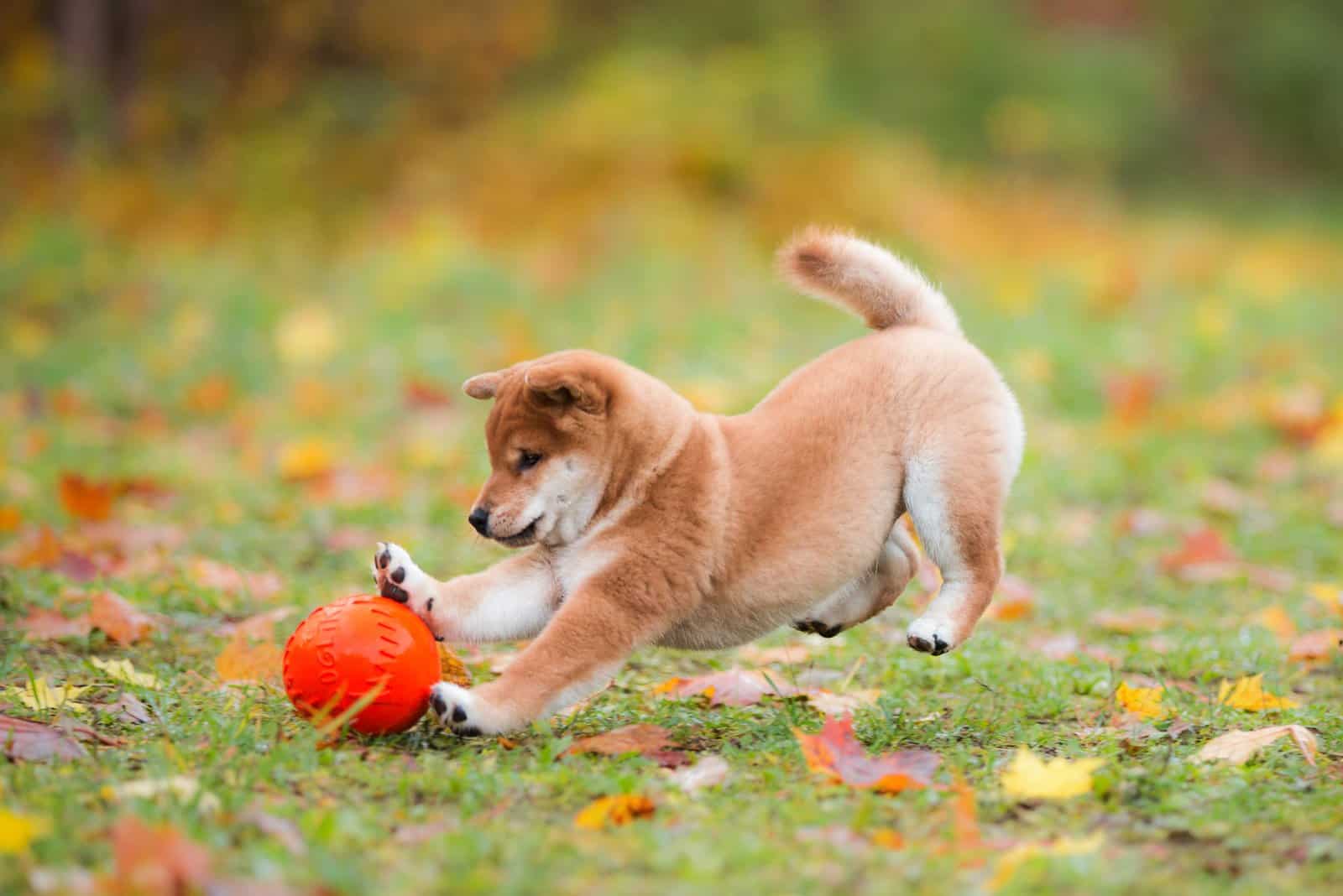
When searching for the perfect Shiba Inu puppy, we strongly advise you to steer clear of any pet store, puppy mill, and backyard breeder in order to be sure you get a purebred Shiba Inu instead of a mixed breed.
If you plan on entering your Shiba Inu in dog shows, its coat color must conform to AKC standards.
Also, irresponsible breeders will often keep their dogs in unsanitary conditions, which could result in an unhealthy puppy that hasn’t properly been cared for, hasn’t been vaccinated, or hasn’t been properly socialized early on.
Instead of winging it, try your best to find official breeders that uphold the highest standards and perform the necessary health tests before you decide to purchase your new puppy.
Shiba Inu Puppy Prices
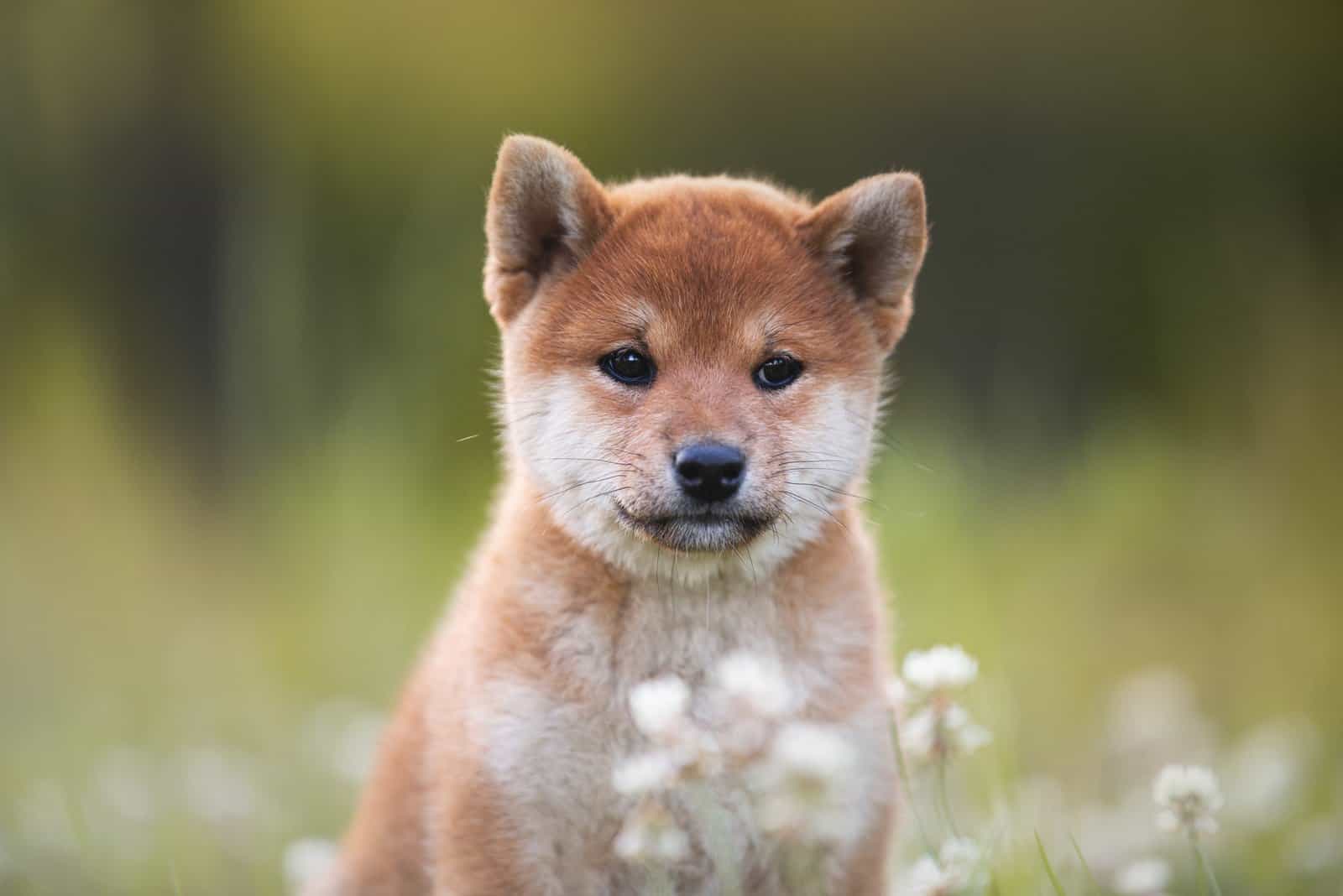
The Shiba Inu is an extraordinary breed that’s quickly gaining popularity all over the world, especially in the United States. Since there is a high demand for this breed, you can expect to pay approximately 1400 to 2200 dollars for a puppy from an official breeder.
The more unusual your puppy’s coat color is, the more you can expect to dish out for your new Shiba Inu. Puppies with certified, pedigreed parents can even cost you up to 3500 dollars.
Of course, you can always find your perfect canine companion at a discounted price if you turn to Shiba Inu rescue centers.
However, you should keep in mind that since they are natural watchdogs, this breed can be quite feisty and aggressive toward strangers or other animals.
Be sure to evaluate whether your new puppy is properly socialized and conformed before you take it home, particularly if you have young children or any other pet in the household.
Health Concerns And Temperament Of A Shiba Inu
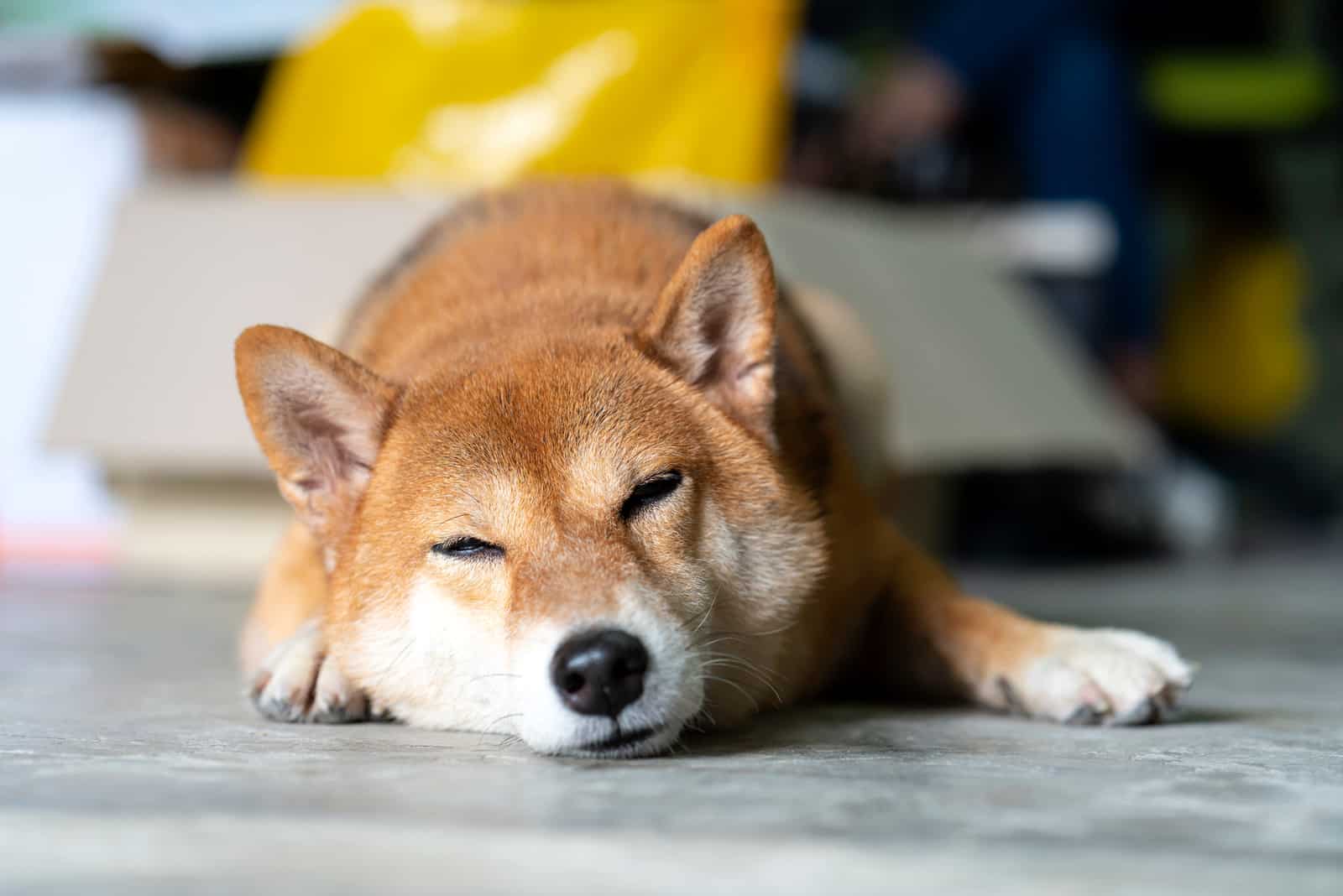
The Shiba Inu is an overall healthy breed; however, like all breeds of dogs, they may be prone to certain health problems. With Shiba Inus, these include joint problems such as hip dysplasia (the loosening of the hip joint during its growth stages), patellar luxation (the dislocation of the kneecap), or eye problems like canine glaucoma and cataracts.
These different health problems can occur later on in the dog’s life due to aging.
Physically, they have well-built, muscular, symmetrical bodies that bear a strong resemblance to foxes.
They are naturally fearless and tough, which make them excellent watchdogs, but they also have a soft side. Shiba Inus are known to be extremely loyal and loving companions.
In addition to that, they are very intelligent and easily trainable.
They adore being around their family, and they tend to spend most of their time indoors.
However, they need plenty of exercise, and they enjoy the outdoors, so they will happily come along on walks or runs.
Shiba Inu Life Expectancy And Maintenance
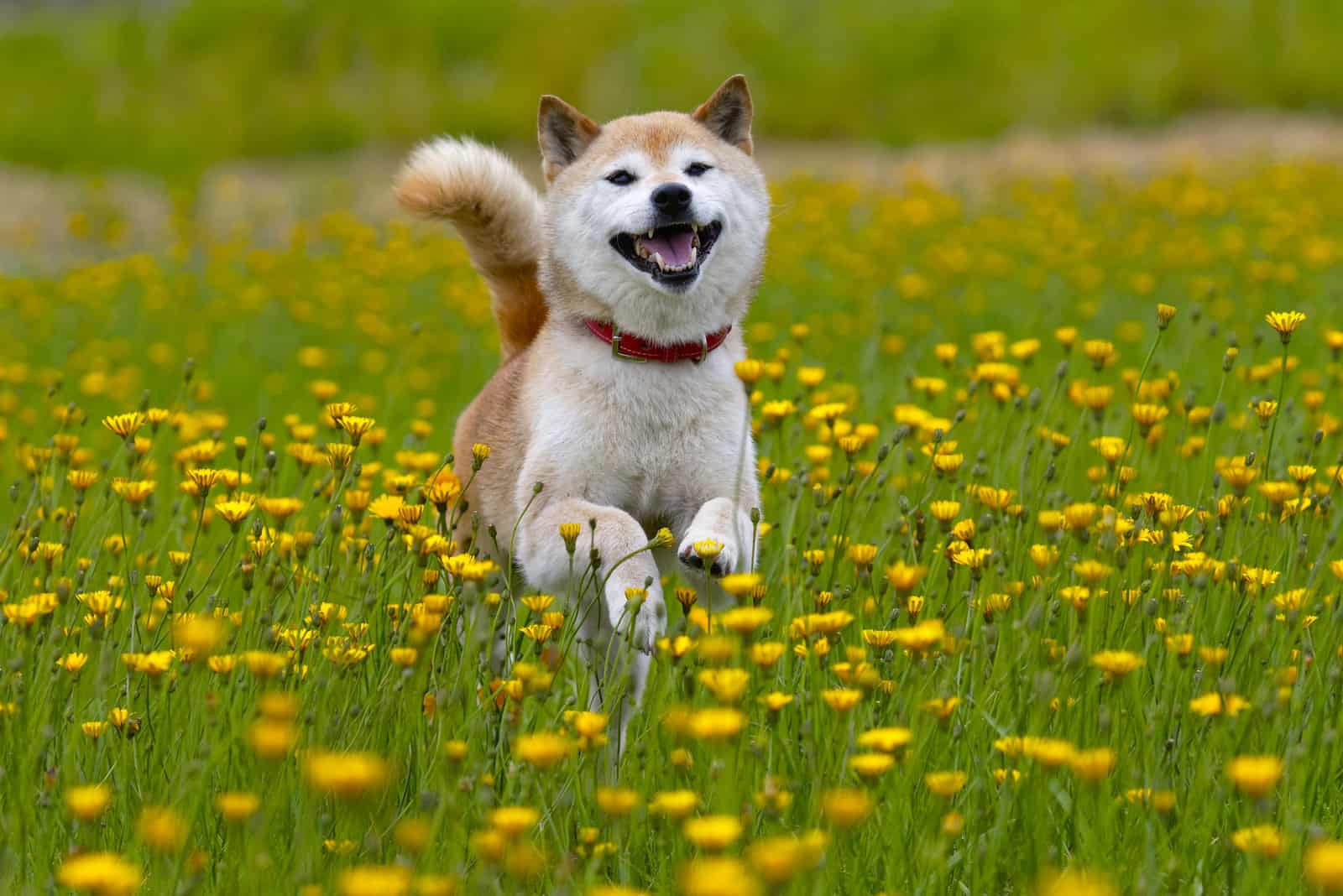
The Shiba Inu’s life span is approximately 12 to 15 years. They are long-lived, and can stay healthy for a long time if cared for properly. This includes good nutrition, regular exercise, and regular health checkups.
If you have a young puppy, you should take it to the vet for health tests once a month to ensure the puppy is up to date with all its vaccinations. This is done until your dog is around 16 weeks old. After that, when your dog reaches adulthood, it is recommended that wellness checks are performed at least once a year.
During regular health exams, your vet will also ask you about your dog’s behavior and overall wellness.
Depending on the matters you bring up, or observations the veterinarian makes during the exam, they might recommend certain tests or treatments.
All in all, if you adhere to these general guidelines for taking proper care of your puppy, your Shiba Inu will most likely live a long and happy life!
In Conclusion
In general, Shiba Inus are born to be great watchdogs, loving companions, and family dogs.
Although they are tender and devoted to those they know, the Shiba Inu can be reserved or even hostile toward strangers. This is why early socialization is crucial.
That way, when you bring your new puppy home, it will already be perky and excited to play, and it will build a strong bond with you and the rest of your family.
The truth about finding a dog that fits your lifestyle perfectly is that you have to take into account a lot of different factors. So, if you think the Shiba Inu is the perfect fit for you, go for it!
When it comes to coat colors, if you don’t plan on showing off your dog in competitive circles, you shouldn’t be too concerned with its overall appearance. Your dog will always love you unconditionally no matter what its coat color is!
We hope you found our article on the different types of Shiba Inu coat colors informative. They come in more variations than most people realize!
